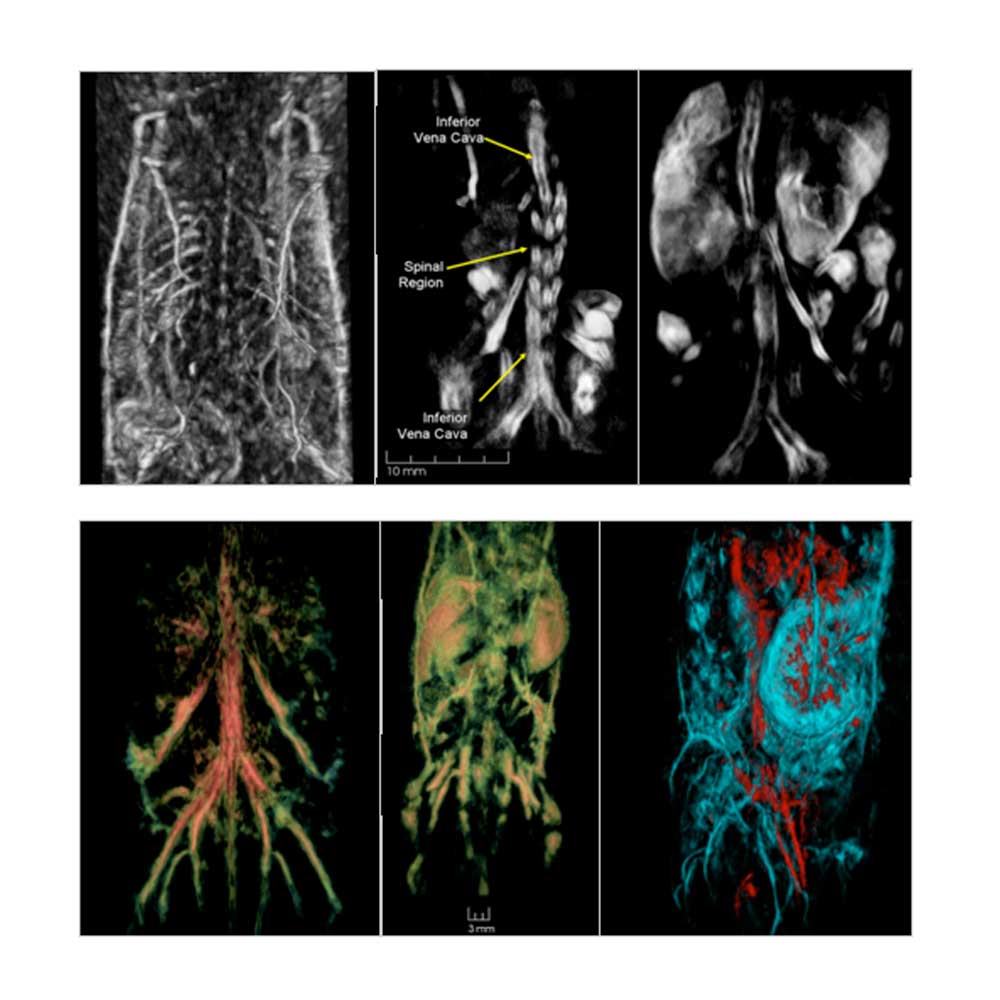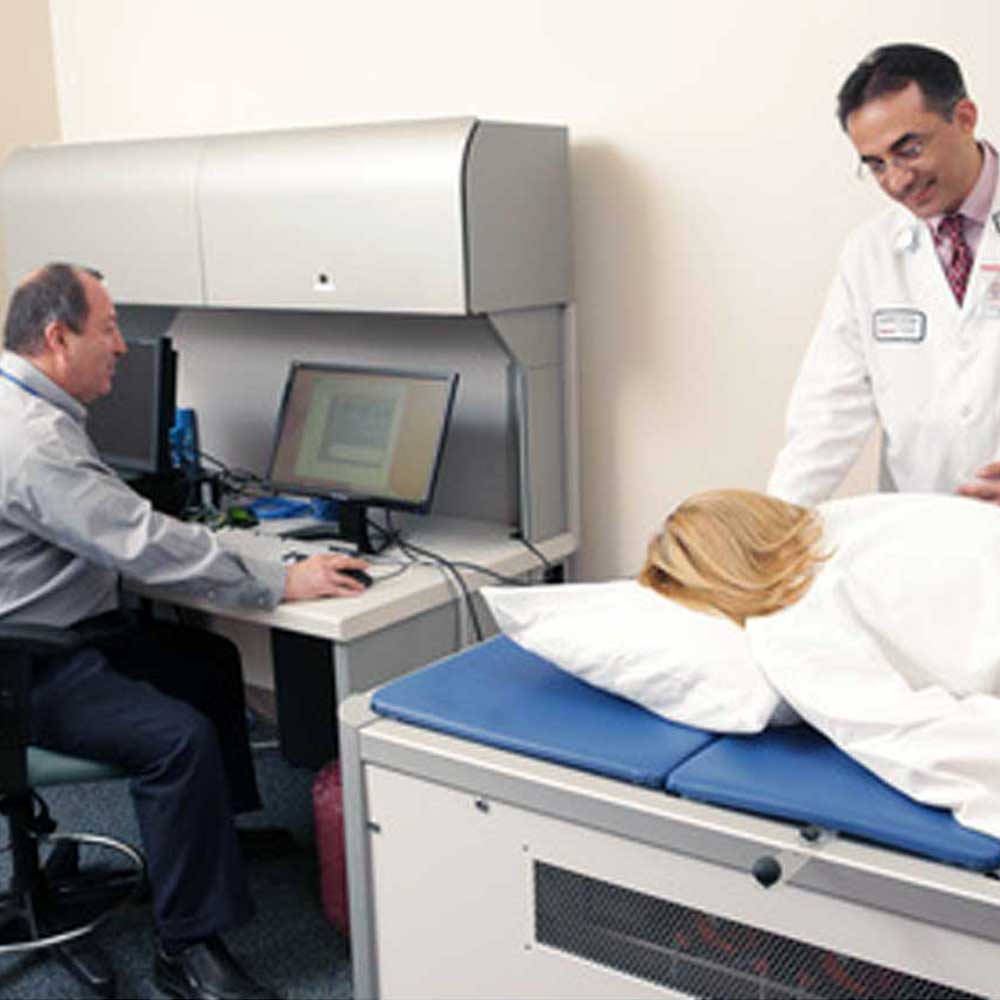Combining properties of light and sound
To create advance imaging technology
the principles of optoacoustics
TomoWave technology employs the principles of depth-resolved optoacoustic (photoacoustic or thermoacoustic) imaging. Laser Optoacoustic Imaging System illuminates tissues by short laser pulses with dark red color. Absorption of laser energy specifically by tissue molecules selected by the wavelength of laser light increases tissue temperature to a small fraction of one degree, simultaneously generating local pressure. Thermal expansion of the heated voxels of tissue launches acoustic pressure waves (ultrasound). Detection of ultrasound signals from multiple positions of the detector (transducer) and conversion of these signals into a digital form allows the acquisition and storage of quantitative information about the object of interest. The computer is used to reconstruct tomography images of molecular contact and tissue function, thereby providing diagnostics of cancer and vascular diseases.


Pre-clinical research applications
Mouse models of disease are the main subject of medical research. Traditional systems (Xray, MRI, ultrasound) provide only anatomical images, but neither functional info on blood content and oxygen saturation nor highly resolved images of molecular composition. Tomowave technology for preclinical research combines light and sound to produce a three-dimensional image of tissue-simulating phantoms, small animals, and other types of tissue submerged in the imaging module. Optoacoustic imaging method solves the problem of light scattering in tissue and delivers highly resolved 3D optical images of live tissues through the entire body + brain of a mouse. Optoacoustic spectroscopic imaging provides high-resolution images with molecular specificity not attainable by pure optical imaging, Xray, MRI, or USI.
Clinical applications
Tomowave is developing optoacoustic tomography, the fastest growing medical imaging technology of the 21st century, invented by its founder, Dr. Alexander Oraevsky. Optoacoustic imaging enables doctors to see through the body by listening to the sound of light. These images display functional information of microcirculation, blood oxygenation and molecular composition with high spatial resolution. Combined with anatomical images based on ultrasound, optoacoustics provide doctors comprehensive information for diagnostics, surgery and therapy. Our vision is to make a breakthrough in medical imaging of cancer and vascular diseases by providing safe, quantitatively accurate and affordable imaging systems in contrast to the present technologies that either use ionizing radiation of X-rays or toxic contrast agents or overly expensive. The main focus of today is the non-invasive clinical breast imaging that produces three-dimensional volumetric images of the breast, along with two-dimensional ultrasonic images for image co-registration. In the pipeline of clinical systems, TomoWave is developing 4D laser optoacoustic ultrasonic systems for diagnostics, image guided-surgery and monitoring thermal therapy.

Collaborators





Need More Information?
TomoWave develops proprietary optoacoustic tomography and laser ultrasound systems for combined functional/molecular and anatomical imaging with applications in detection of cancer and image-guided interventions.